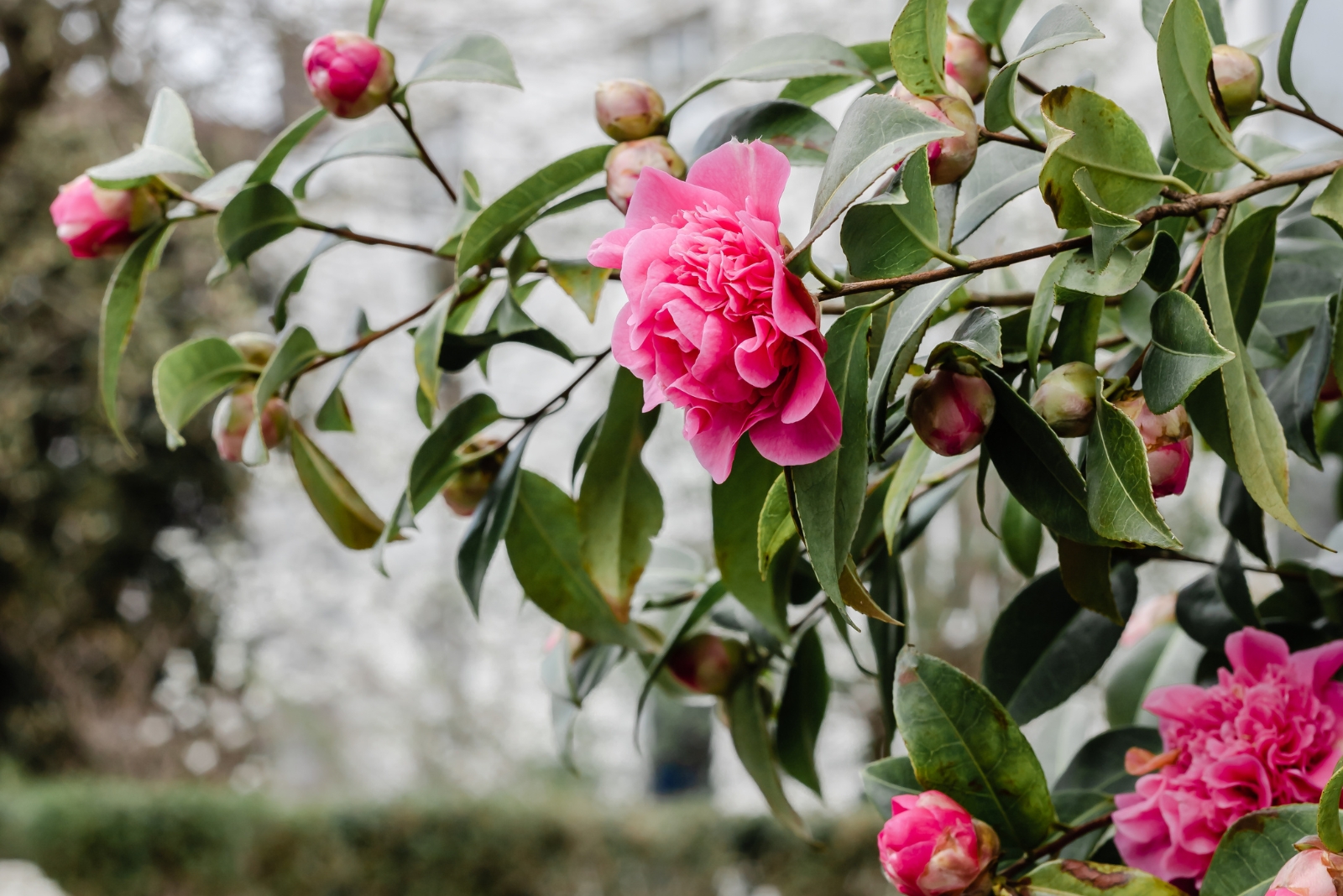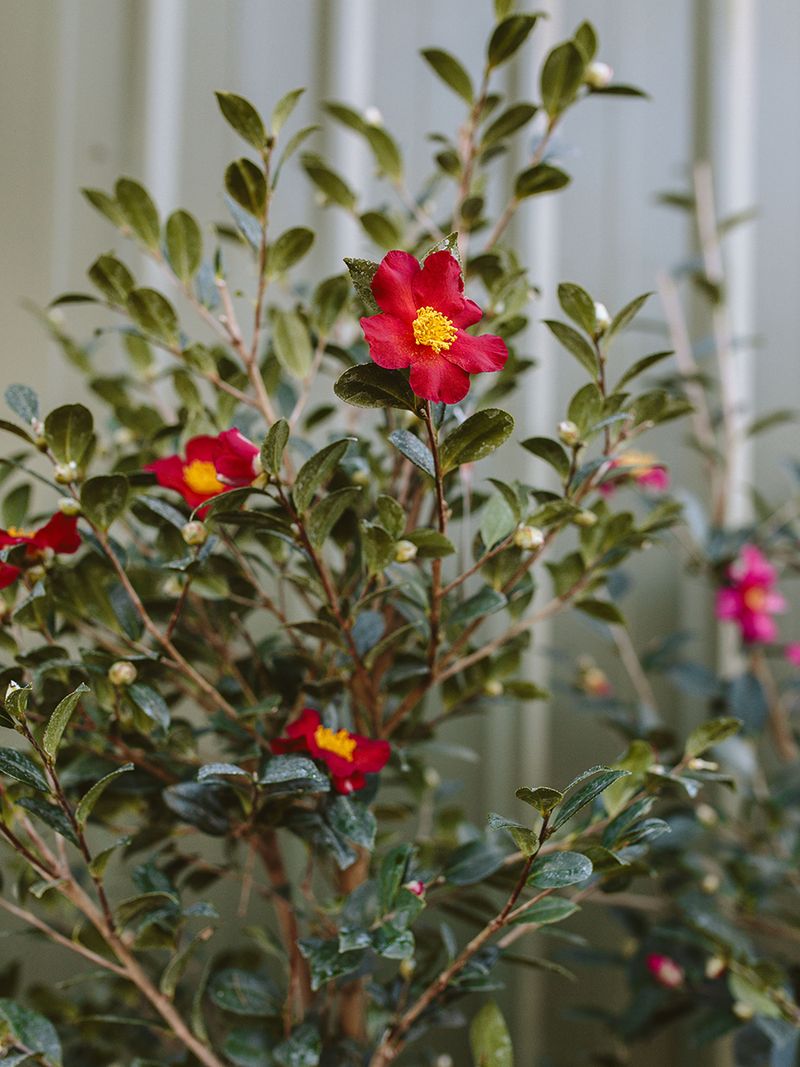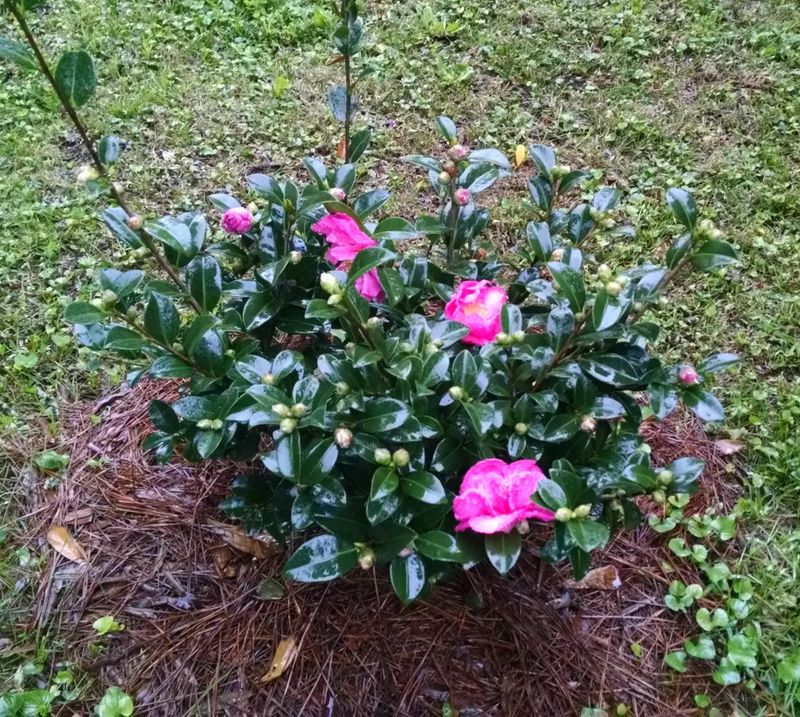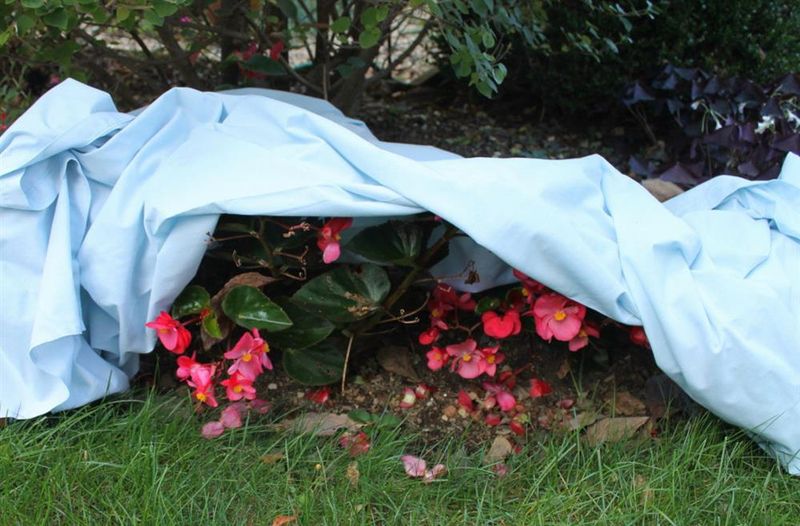As fall settles into North Carolina, camellias begin forming the buds that will carry the show into winter and early spring. But those same buds are the first to suffer when cold snaps, dry winds, or sudden temperature swings roll in.
A few simple steps taken now can mean the difference between full, glossy blooms and a disappointing season.
Protecting roots, shielding buds, and managing moisture are the keys to helping these evergreen favorites ride out the chill. Here’s how to overwinter camellias in North Carolina so they come through ready to bloom.
1. Apply A Thick Layer Of Mulch Around The Base
Mulch acts like a warm blanket for your camellia’s roots when temperatures drop in North Carolina. Spread about three to four inches of organic material such as pine straw, wood chips, or shredded leaves in a circle around the plant’s base.
Keep the mulch a few inches away from the trunk to prevent rot and moisture problems. This protective layer helps maintain steady soil temperature and keeps roots cozy throughout winter’s coldest days.
2. Water Deeply Before The First Frost Arrives
Camellias need plenty of moisture stored in their tissues before freezing weather hits. Give your plants a thorough soaking about a week before you expect the first frost in your area.
Well-hydrated plants handle cold stress much better than thirsty ones. The water inside plant cells actually helps insulate them from damage. Continue watering during warm spells throughout winter, especially if rainfall is scarce in your North Carolina region.
3. Shield Plants From Harsh Winter Winds
Strong winter winds can dry out camellia leaves and damage tender branches. Position burlap screens or install temporary windbreaks on the side where prevailing winds blow strongest.
You can also plant camellias near structures, fences, or evergreen trees that naturally block wind. North Carolina’s winter gusts can be surprisingly harsh, so creating barriers helps your plants retain moisture and stay protected. Simple wooden stakes with burlap stretched between them work perfectly.
4. Choose Cold-Hardy Camellia Varieties For Your Region
Not all camellias handle North Carolina winters equally well. Sasanqua camellias typically tolerate cold better than japonica types, though many japonicas still thrive here with proper care.
Look for varieties labeled hardy to zone seven or colder when shopping. Popular cold-tough choices include ‘Winter’s Snowman,’ ‘April Dawn,’ and ‘Pink Icicle.’ Selecting the right varieties from the start saves you headaches and disappointment later on.
5. Avoid Fertilizing Late In The Growing Season
Fertilizer encourages new growth, but tender young shoots can’t survive freezing temperatures in North Carolina. Stop feeding your camellias by late August to give existing growth time to harden off properly.
Soft, immature tissue is extremely vulnerable to frost damage. Plants need to redirect their energy toward strengthening existing branches rather than producing delicate new ones. Resume fertilizing in early spring when danger of hard freezes passes and growth naturally begins again.
6. Cover Plants During Unexpected Cold Snaps
North Carolina weather can surprise you with sudden temperature drops. Keep frost blankets, old sheets, or plant covers handy for emergency protection during extreme cold nights.
Drape covers over plants in late afternoon and remove them the next morning once temperatures rise. Make sure coverings reach the ground to trap heat radiating from the soil. Avoid letting plastic touch foliage directly, as it can cause freeze damage where contact occurs.
7. Plant Camellias In Protected Locations With Good Drainage
Location matters tremendously for winter survival. Plant camellias on the north or east side of your North Carolina home where they receive morning sun but avoid harsh afternoon exposure.
Good drainage prevents water from pooling around roots, which can freeze and cause serious damage. Raised beds or sloped areas work wonderfully. Avoid low spots where cold air settles. Proper placement from the beginning gives your camellias their best chance at thriving through every winter season.








